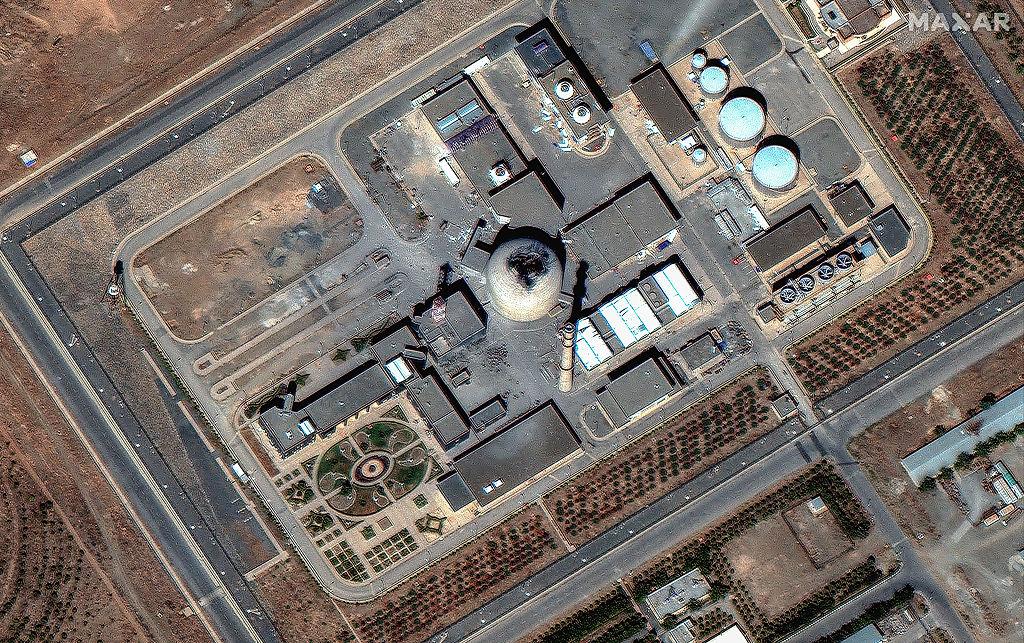Former President Donald Trump has emphasized the importance of convincing the international community that Iran’s nuclear program has been completely dismantled. As tensions over Tehran’s atomic ambitions continue to escalate, Trump’s insistence on portraying Iran’s nuclear capabilities as “obliterated” reflects a strategic move to justify continued pressure and potential military options. This approach underscores the complex interplay between diplomacy, deterrence, and perception in addressing one of the most contentious security challenges in global affairs.
Trump’s Strategic Imperative to Convince the World of Iran’s Nuclear Defeat
President Trump’s administration has centered its foreign policy strategy on projecting an image of decisive success in halting Iran’s nuclear ambitions. Convincing the international community that Iran’s nuclear program is effectively obliterated serves multiple purposes: it bolsters America’s negotiating leverage, reassures allies concerned about regional security, and justifies ongoing sanctions and military posturing. This portrayal is not merely symbolic; it aims to disrupt the momentum Iran may have towards nuclear development, influencing diplomatic talks and containment policies worldwide.
Key elements in this strategy include:
- Public intelligence releases that highlight supposed setbacks in Iran’s enrichment capabilities.
- Enhanced collaboration with Middle Eastern partners to enforce sanctions and share surveillance data.
- Military demonstrations and targeted strikes designed to signal U.S. resolve.
| Strategic Objective | Impact |
|---|---|
| Diplomatic Leverage | Strengthens U.S. position in negotiations |
| Regional Stability | Reassures Gulf allies on security threats |
| Global Perception | Frames Iran as strategically weakened |
Analyzing the Geopolitical Stakes Behind the Obliteration Narrative
The narrative surrounding the *obliteration* of Iran’s nuclear program serves multiple strategic purposes beyond mere diplomatic posturing. By projecting an image of complete dismantlement, the administration seeks to solidify international consensus, particularly among hesitant allies, bolstering support for potential military actions or sanctions. This approach also targets domestic audiences, reinforcing a tough-on-Iran stance that aligns with key political agendas. The geopolitical calculus leverages uncertainty-while the world is led to believe in a decisive end to Iran’s nuclear ambitions, the reality remains complex, with intelligence assessments often obscured by layers of political messaging.
Several geopolitical elements underscore the significance of this obliteration narrative:
- Regional Power Dynamics: It aims to reassure U.S. allies such as Israel and Saudi Arabia who view Iran’s nuclear capability as an existential threat.
- Global Diplomatic Leverage: The narrative strengthens U.S. negotiating positions at forums like the UN and IAEA, applying pressure on Iran to comply or face intensified repercussions.
- Domestic Political Capital: It consolidates a political image of decisive leadership needed ahead of crucial electoral cycles.
| Stakeholder | Interest | Impact of Narrative |
|---|---|---|
| U.S. Allies | Security Assurances | Increased Support for Policy |
| Iran | Regime Survival | Stronger Resolve to Resist |
| Global Community | Nuclear Stability | Divided Opinions |
Policy Recommendations for Ensuring Credible Verification and Global Consensus
To restore trust and credibility in the verification of Iran’s nuclear program status, it is essential to implement a multi-layered framework that leverages international expertise and technological advancements. First, verification protocols must be transparent and backed by reliable, third-party monitoring agencies, incorporating real-time satellite surveillance and on-site inspections by IAEA representatives. Key elements include:
- Regular and unannounced inspections at all known nuclear facilities
- Mandatory data sharing of Iran’s nuclear activities with global watchdogs
- Integration of AI-driven analytics to detect any anomalous behavior
- Clear, enforceable consequences for non-compliance outlined in international treaties
Building global consensus is equally critical. Diplomatic efforts should focus on fostering multilateral agreements that align the interests of major world powers with regional stakeholders, ensuring any verification mechanisms are endorsed universally. This unity prevents unilateral narratives and reinforces the legitimacy of the verification outcome, thereby avoiding misinformation. Below is a simplified overview of the proposed stakeholder roles:
| Stakeholder | Role | Primary Responsibility |
|---|---|---|
| United Nations | Facilitator | Oversight & dispute resolution |
| IAEA | Verifier | Inspection & data analysis |
| Iran | Subject | Full cooperation & transparency |
| Major Powers | Enforcers | Impose sanctions & diplomatic pressure |
| Regional Allies | Supporters | Ensure regional stability & reporting |
In Conclusion
As the geopolitical stakes continue to rise, the narrative surrounding Iran’s nuclear program remains a central focus in international discourse. Former President Trump’s insistence on portraying the program as ‘obliterated’ reflects broader strategic aims to rally domestic and global support while maintaining pressure on Tehran. Whether this characterization holds under scrutiny will significantly influence diplomatic dynamics and security calculations in the region. As world powers watch closely, the true state of Iran’s nuclear ambitions and the global response to them remain critical issues to monitor in the months ahead.
